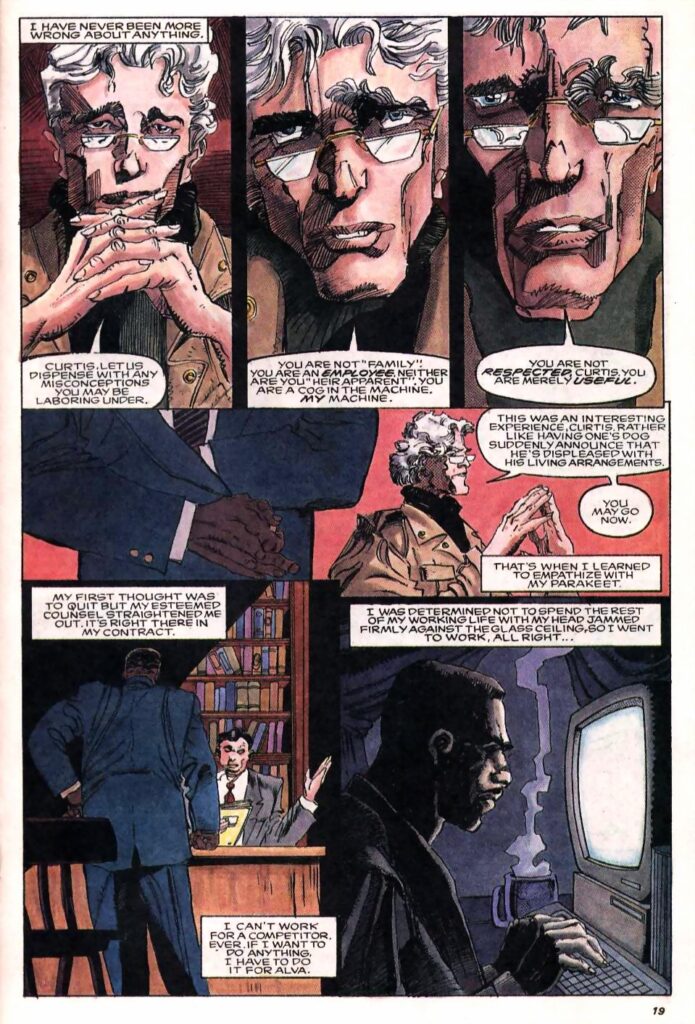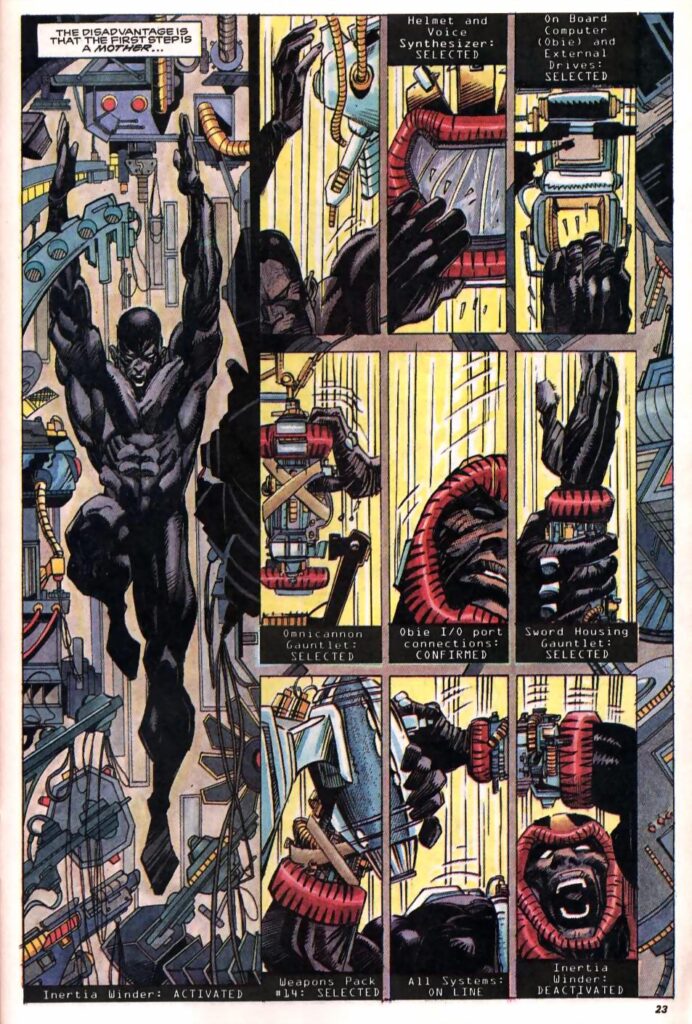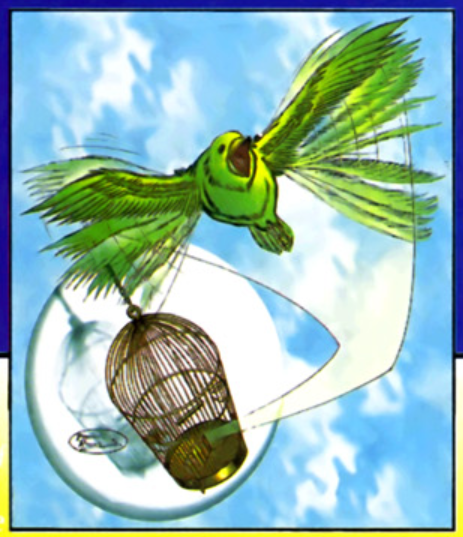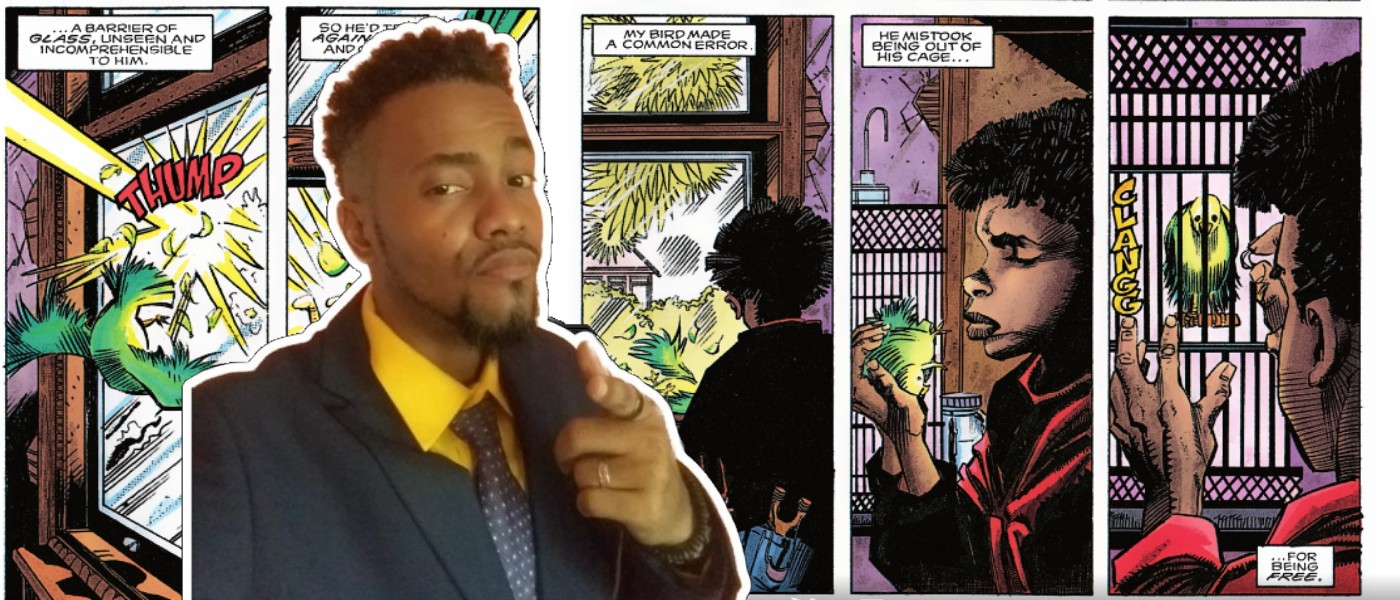Curtis Metcalf and the Mirror of Manhood
There comes a moment in many men’s lives when the loyalty they’ve offered, the labor they’ve invested, and the ideals they’ve believed in come into question. For some, this comes quietly in midlife reflection. For others, it arrives with heartbreak, job loss, or betrayal. In the world of comics, few characters capture this visceral, emotional disillusionment quite like Curtis Metcalf, better known as Hardware from the Milestone Media universe.
As a Black male superhero, scientist, and tech genius, Metcalf stands apart. But it is not just his armor or intellect that makes his story powerful—it’s his emotional journey. His betrayal by Edwin Alva, the white industrialist who mentored him, is more than a plot point. It is a metaphor for every man who realizes that loyalty to a system or person does not guarantee respect or reciprocation.
In reflecting on Hardware’s story, I am reminded of Maya Angelou’s iconic metaphor of the caged bird—a creature born to soar, hemmed in by bars of fear, power, and containment. Hardware is that bird. So are many of the men I’ve counseled, taught, and walked beside through the years.
Alva Industries: The Illusion of Inclusion
Curtis Metcalf was a prodigy. Recruited and groomed by billionaire Edwin Alva, he believed he was part of something larger—respected for his talent, trusted as a contributor. But when he discovered that his inventions were being used for unethical purposes, and when he tried to speak up, the response was swift and devastating: He was discarded, blacklisted, and silenced.
This betrayal hits differently for Black men.
There is a painful familiarity to being elevated for what you can do, not who you are. To being welcomed into rooms where you are useful, but never fully seen. Many Black professionals have experienced the sting of tokenism, only to be reminded that their position was conditional.

For readers—especially Black male readers—Hardware’s disillusionment with Alva is not just corporate drama. It echoes generational pain: the father figures who disappoint, the institutions that exploit, and the promises of equality that vanish when challenged.
The Armor and the Cage: A Symbolic Transformation
When Curtis dons the Hardware armor, it is both an act of liberation and a reactionary survival move. Like Angelou’s caged bird, his song is one of defiance and sorrow. He does not build his suit to be heroic. He builds it to fight, to take back what was stolen, to protect himself.
In counseling, this is what we call armor psychology—the emotional defenses men build when trust is shattered. The armor becomes the identity: strong, impenetrable, efficient. But it can also isolate.
Hardware’s armor represents brilliance turned inward. Like many men who have been hurt by their workplaces, families, or systems, Curtis withdraws emotionally. He channels pain into productivity. But inside the armor, the man is still wounded, still asking: “Why wasn’t I enough?”
Angelou’s (1969) poem reminds us that the caged bird sings not because it is free, but because it longs to be. Similarly, Hardware fights not just for justice, but for acknowledgment, dignity, and emotional freedom.
Betrayal, Aging, and the Male Psyche
As men grow older, we begin to re-evaluate what mattered. Titles, roles, and ambitions that once fueled us begin to lose meaning if they were never truly ours. Hardware’s journey resonates because it captures a man at the crossroads: brilliant but bitter, gifted but grieving.

Psychologist James Hollis (2005) argues that the second half of life for men is often defined by a search for meaning after disillusionment. This is the emotional terrain Curtis Metcalf walks: not just revenge, but reconstruction.
He must rebuild his sense of self without the scaffolding of Alva’s approval. This is a deeply philosophical moment—a movement from other-definition to self-definition.
The Caged Bird and the Unseen Genius
Hardware is not just a story of corporate betrayal—it is the story of the unseen genius. Of every Black boy told he was gifted, only to be later told to “stay in his lane.” Of every man praised in public but undermined in private. Of every caged bird.
And yet, the bird sings.
That is what makes Hardware revolutionary. He is angry, yes—but not broken. He is hurt, but still dreaming. In donning the armor, he claims his agency, his narrative, and his future. He reminds us that even when cast aside, we are not done. We are still writing. Still singing. Still fighting.
Legacy and Reflection: Hardware as a Model of Reclamation
For young men encountering Hardware today—particularly those raised in the shadow of underappreciation—his story offers both a warning and a guide:
- Do not confuse validation with value.
- Do not let betrayal define your trajectory.
- Remember that your worth is not contingent on their recognition.
As an educator and counselor, I often use stories like Hardware’s to open conversations about burnout, grief, identity, and purpose. I’ve seen men in their 40s, 50s, and 60s cry when they finally admit they gave their best years to a system that never saw them.
But like Curtis Metcalf, they can begin again.
Let the Bird Sing
Hardware is more than a superhero. He is a symbol of what happens when brilliance is used but not honored. He is a mirror for men growing older, asking, “Was it worth it?” and daring to answer, “Not yet—but it will be.”

Like Maya Angelou’s caged bird, Curtis sings of freedom not as a fact, but as a faith. A belief that even when betrayed, we can rise. Even when cast aside, we can create. And even when silenced, we can speak.
In a world still learning how to love and honor Black genius, Hardware reminds us: Our story is still unfolding.
References
Angelou, M. (1969). I Know Why the Caged Bird Sings. Random House.
Hollis, J. (2005). Through the Dark Wood: Finding Meaning in the Second Half of Life. Gotham Books.
Milestone Media. (1993). Hardware #1. DC Comics.
Nama, A. (2011). Super Black: American Pop Culture and Black Superheroes. University of Texas Press.
Robinson, T. (2018). “Revisiting Hardware: The Black Genius Who Refused to be Owned.” Afrofuturism Journal, 5(2), 22–31.
Walker, S. (2017). “The Mask and the Man: Superheroes and Emotional Suppression in Black Male Narratives.” Journal of Black Psychology, 43(4), 335–349.
